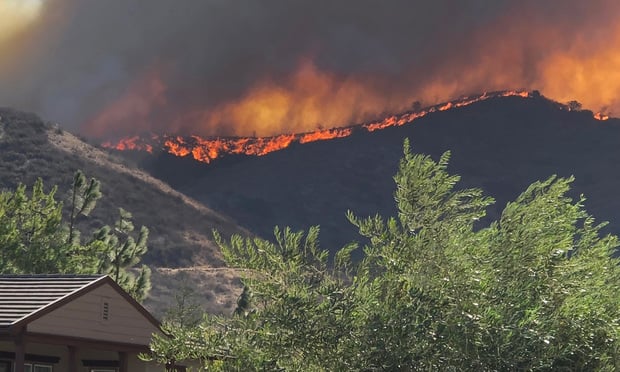If you know what “bumbershoot” is, you're ahead of the curve.
If not, a little background in the difference between Inland Marine and Ocean Marine coverage might be in order, before examining the state of both markets and whether producers might seek to do more business in them.
While it's tempting to simply refer to Inland Marine as insurance solutions for anything transported across brown water and Ocean Marine as coverage for that which moves over blue water, the truth is, these two types of cover are far more complicated.
Broadly speaking, “marine” risks do not lend themselves to be adequately covered under a property policy. Ocean Marine cover, perhaps the world's oldest type of insurance, does include indemnity for losses that occur primarily on international voyages, but also can cover any losses suffered while goods are a mile offshore. Ocean Marine coverage primarily includes coverage for the vessel or hull of a ship; the cargo; the freight revenue to be received by the ship's owner; and legal liability for any negligence by the shipper or the carrier.
Inland Marine, meanwhile, includes far more types of cover than one might expect. These include but are not limited to builders' risk, fine arts, guns, museums, all goods that move on land, motor truck cargo, contractors' equipment, musical instruments, mobile medical equipment, exhibitions and the like. It's helpful to think of Inland Marine risks as property cover for property that is not fixed in one place: If it can be moved, whether it's a crane or a diamond necklace, it's likely to fall under the classification of Inland Marine. Construction and transportation account for the lion's share of Inland premiums (about 60%).
That said, executives in both lines will tell you there's a low barrier for entry (meaning that not as much capital is required than in other types of cover) and there's less regulatory oversight and filing than in other P&C lines. What's more, with a few notable exceptions (Superstorm Sandy being one of them), the loss history for both lines is historically quite good. It's not uncommon for the combined ratio for marine risks to outperform the rest of the P&C segment by at least 10 points. It's good business to write, which attracts many players and a lot of capacity—but that makes it a tough business at times to get rate in.
Differentiation in service, therefore, is especially key when writing marine risks, along with solutions carefully crafted with the client. Don Harrell, who heads marine and exploration & production businesses in the U.S. and Latin America for Liberty International Underwriters as senior vice president/marine, cites three key components vital to his business: claims, engineering and loss control. Continued investment in all three departments, he stresses, is essential.
“It's a highly specialized and technical line of business,” Harrell says. “You need your claims department to be heavily involved in the process not only to determine how our portfolio is trending, but how we're responding to the customer. You need to be actively involved with clients to give them an extra set of eyes to their risks.”
“At the heart of it, [Ocean Marine cover is] a world in which the carrier can customize coverage to the customer's needs,” says Bill Queen, president of Ocean Marine for Travelers. The carrier's cargo agency, hull agency and general agents spend a lot of time explaining coverage to clients, he says. “In the cargo world, you need to know where the cargo is going and who's responsible for it at different points. Am I covering it when it gets to dock? On the ship? If the ship goes down, what's going to happen to that product? Do you want your customer's product to be scrapped if it gets damaged, or will it be sold off at a discount? The [customer] doesn't want to be surprised when there's a loss.”

BIGGER VESSELS, GREATER EXPOSURE
Losses in the Ocean Marine segment of late have been driven by the emergence of much larger cargo vessels than ever before. Triple-E cargo ships (the largest in the world) can carry as many as 18,000 containers, at insured cargo values of up to $2 billion—and when one of those vessels sinks, the potential for loss is significant. The MOL Comfort container ship, for example, racked up an estimated $300-$400 million in claims last year when it cracked in two and sank off the coast of Yemen.
“The complexities in costs there have a huge impact on the financials and balance sheets, but also from a claims-handling perspective when you're dealing with a loss in international waters,” says Patrick Hickey, senior vice president, Ocean Marine portfolio leader for Zurich Global Corporate in North America.
“Exposures continue to grow with vessel size,” agrees Rich DeSimone, president of North America Ocean and Inland Marine for XL, citing examples such as the Mary Maersk, a huge cargo ship that departed Algeciras, Spain, on July 21 with a world-record cargo of 17,603 20-foot equivalent units—the most ever carried by a single vessel.
While frequency may be down in the number of incidents, he adds, the severity of maritime accidents like the wreck of the Costa Concordia and a federal judge's recent ruling that oil giant BP Plc was “grossly negligent” for its role in the 2010 Deepwater Horizon spill in the Gulf of Mexico illustrate the severity of the accidents that do happen.
According to Allianz Global Corporate & Specialty SE's (AGCS) second annual Safety and Shipping Review 2014, which analyzes reported shipping losses higher than 100 gross tons, more than a third of 2013's total losses were concentrated in two maritime regions. The South China, Indo China, Indonesia and Philippines regions saw the highest number of losses (18 ships), followed by the seas around Japan, Korea and North China (17 ships).
Which is concerning, given that goods produced in Asia are so critical to many U.S. supply chains. “The global economy has changed how we view the exposures as underwriters,” says Kevin Wolfe, Allianz's marine regional head for the Northeast. These days, he explains, it's far more top-of-mind for U.S. manufacturers to have insurance solutions in place for key suppliers in the Far East or Africa: “Now they want to know what happens if a supplier has an explosion, and business is lost because goods won't reach customers.”
Wolfe concurs that larger vessels are a concern for insurers. “As container ships get larger, the values are jumping almost exponentially,” he says. “On normal container ships, you have an idea as an insurance carrier what the exposure is, but with larger ships that's more difficult to determine.”
Indeed, one of the biggest challenges in underwriting Ocean Marine, some executives say, is the limited amount of loss data available. Port aggregations are hard to measure, DeSimone says, as there's less collecting and sharing of data captured. As such, at times it's virtually impossible for certain underwriters to determine what their precise exposures are in a given area.
The challenge is there's not enough claims data on any one company to predict exactly how the business is performing, Harrell adds. Queen at Travelers agrees: “There's no one body that collects that data,” he noted, adding that with less claims data to go on than in other lines, “gut underwriting” often figures into the equation.
CONSTRUCTION CONCERNS, CARGO THEFT
The current story in Inland Marine, meanwhile, mirrors the economy in that construction is on the upswing, with more projects in motion than in previous years and previously stalled sites humming again. Yet with that growth come some growing pains, says Joe Tracy, president of Inland Marine for Travelers.
“Is there enough skilled labor for those projects?” he asks. “Can construction forms keep current with changes in construction methods?” What's more, he points out, there are more fixtures being installed in buildings and houses than ever before, and lot more plastic tubing is being used in place of more expensive materials like copper or pipe. “Those new materials can impact the building; what's the life cycle of those products?” he ponders. “We don't know the answers, as that's still evolving.”
Building to green standards is another complicated discussion being had around various construction projects, says Bob Opitz, worldwide Inland Marine manager for the Chubb Group of Insurance Cos. The valuation of some new structures, he explains, includes additional expenses that go into obtaining green certification; with a construction project, that can include such issues on sites as segregation of waste and waste removal, and highly specific sourcing of green-certified wood and other materials. Violation of, or errors made in any of those endeavors can lead to defaults.
The handling of construction claims, says Tracy, has changed: Generalists cannot handle those claims, as costs can quickly escalate. Expertise among those who specialize in Builders' Risk must be brought to the table, both in claims handling and general client service.
The difference between the men and the boys, he says, lies in “how you deliver the expertise. It has to be tangible. It has to be real. You develop as custom a product as you can to address coverage needs, and then do what you can to decrease [the client's] loss history and severity.
Truckers, for example, are moving more goods than ever, Tracy points out. Travelers' “sting trailer” is often employed in working with local law enforcement to counter hijackings and theft in certain areas of the country. High concentrations of goods being transported on land, especially aboard trucks, can spell greater losses if a load vanishes in transit.
Hickey at Zurich notes that cybercrime has extended to the trucking space via thieves who obtain information on when goods are to be moved, intercept the load, and make off with it.
“A criminal poses as a trucker and takes data off a truck board, shows up at a location with falsified info and steals the cargo without ever having to lift a gun,” he says. “The full scope of those risks is not always contemplated when [clients] are looking at their forecasts. But it very much should be.”
PRODUCER OPPORTUNITY: EXISTING CLIENTS' MARINE NEEDS
There's good news for those agents and brokers looking to break into Inland and Ocean Marine: Many of your existing clients have coverage needs in those lines that you're probably not aware of or previously haven't considered.
“Every single agent, I don't care if you're a storefront agency or otherwise, has some kind of Inland and Ocean Marine exposure among their clients,” says Rich DeSimone at XL. “Every one of them has someone having something built, or who are moving goods from point A to point B. It's a matter of developing a sensitivity to that,” he adds. “Otherwise, someone else is going to get in on that business.”
Kevin Wolfe at Allianz offers similar advice, suggesting that producers take a closer look at their current list of insureds. “They would probably find more opportunities from existing clients,” he says. “Transportation exposure is a big one that clients miss. All they have to do is ask their clients how they insure their goods in transit.
“Most marine insurance companies' underwriters are more than capable of working with brokers and taking them through the process. There's a big opportunity for brokers to increase Marine business, and I think they should.”
“Most of the people in this industry come from a maritime background, and they have a language that's unique to that environment,” Queen notes. He suggests that agents inquire through their middle-market reps about instructional classes offered by carriers, through which they learn some of the lingo involved. “Recognize that the laws and language and jargon are different in Ocean, but experts can help with that,” he says. For example, he adds, “Bumbershoot is Marine umbrella.
“On day one, it's very difficult to learn that jargon. Don't be intimidated by that. Get an expert to help you; that's the key. You can learn it, but it takes time to get credibility on the sea.”
Want to continue reading?
Become a Free PropertyCasualty360 Digital Reader
Your access to unlimited PropertyCasualty360 content isn’t changing.
Once you are an ALM digital member, you’ll receive:
- Breaking insurance news and analysis, on-site and via our newsletters and custom alerts
- Weekly Insurance Speak podcast featuring exclusive interviews with industry leaders
- Educational webcasts, white papers, and ebooks from industry thought leaders
- Critical converage of the employee benefits and financial advisory markets on our other ALM sites, BenefitsPRO and ThinkAdvisor
Already have an account? Sign In Now
© 2025 ALM Global, LLC, All Rights Reserved. Request academic re-use from www.copyright.com. All other uses, submit a request to [email protected]. For more information visit Asset & Logo Licensing.








